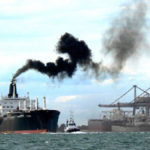Baltic Dry Index to Push Through 4,000 points?
 Commodity markets were shaken over the weekend when news got out about the Chinese government warning “speculators” and “hoarders” in commodity markets about price fixing activities. But let’s be clear, the Chinese authority, the National Development and Reform Commission, has been making vague accusations and threats, rather than identifying instances of malpractice.
Commodity markets were shaken over the weekend when news got out about the Chinese government warning “speculators” and “hoarders” in commodity markets about price fixing activities. But let’s be clear, the Chinese authority, the National Development and Reform Commission, has been making vague accusations and threats, rather than identifying instances of malpractice.
In this press release (https://www.ndrc.gov.cn/xwdt/xwfb/202105/t20210524_1280583.html) of 24 May, China’s National Development and Reform Commission, notes that, “since the beginning of this year, the prices of some bulk commodities have continued to rise sharply, and the prices of some varieties have reached new highs, which has attracted widespread attention from all sides. This round of price increases is the result of multiple factors, including international transmission factors, but also in many aspects that reflect excessive speculation, disrupting the normal production and sales cycle, and contributing to the price increase.”
The wording is quite vague. “Attention from all sides” could refer to anyone, news outlets, buyers, sellers, whoever, and moreover isn’t illegal. The accusation, when it comes, is equally vague, referring to “international transmission factors” which could mean shipping rates – still a very low proportion of the landed cost of most metal ores in China. Then the NDRC refers to “many aspects that reflect excessive speculation.” Excessive speculation can be easy to spot: there have been plenty of asset price bubbles over the centuries. Current metal prices do not indicate a bubble.
There has been no explosion of derivatives volumes, but derivatives purchases have tracked the rise in commodity values. According to SGX in Singapore, “Total commodity volume on SGX climbed 25% y-o-y in April to 2.2 million contracts, with iron ore derivatives up 19% at 1.8 million. Record physical iron ore prices bolstered demand to manage risk via options contracts. Freight derivatives volume continued to be underpinned by tightness in supply chains across dry-bulk markets, with forward freight agreements (FFA) surging 90% to 144,423 contracts. SGX’s unrivalled offering enables market participants to manage bulk cargo and freight risks on a liquid and capital-efficient platform.”
Back to the NDRC’s note. What disruption to normal production and sales cycles has been apparent in global ore supply chains? There has been some port congestion linked to public health measures themselves necessary because of an original failure of sanitation process in a Chinese wet market, basis China’s own explanation of the origins of Coronavirus. But, rather than hold back supply, global producers and traders are keen to move as much volume as possible and to make hay while the sun shines. Their frenetic activity is a rational reaction to fundamentally strong demand for steel in China, itself related to the global bump in demand related to government stimuli and infrastructure spending, themselves based on using historically low current costs of borrowing to try to restore growth to economies where services are on hold due to the pandemic.
The NDRC’s memo tells us exactly what the authorities said at the meeting at which assembled metal industry executives got their telling-off: “The meeting requested that relevant key enterprises should improve their positions, establish awareness of the overall situation, actively fulfil their social responsibilities, promote the coordinated development of upstream and downstream industries, and maintain a good industry ecology; strengthen legal awareness, operate in an orderly manner in accordance with laws and regulations, and take the lead in maintaining market prices for bulk commodities.” In other words, they were told “We’ve got our eye on you, so behave.”
There was one specific action for the executives to take away from the meeting. This is it: “Order, must not collude with each other to manipulate market prices, fabricate and spread information about price increases, and must not hoard odds and drive up prices. Relevant industry associations should correctly perform the functions of industry autonomous organizations from the perspective of conducive to the long-term and healthy development of the industry, give full play to the role of bridges, guide industry enterprises to strengthen self-discipline, and jointly maintain the normal market order of the industry.”
The phrase “hoard odds” suffers perhaps in translation, but I think it refers to paper positions rather than physical transactions. We all hear complaints from time to time about how FFA traders (read: charterers) “manipulate” the physical freight markets to their advantage. But we rarely hear of sanctions against FFA traders for malpractice. I think the NDRC’s “order” amounts to the same complaint. It’s like a school teacher telling the class, If I find any funny business going on, you’re all in trouble.
After the vague accusations of funny business, the NDRC makes its “you’re all in trouble” threat: “The meeting made it clear that in the next step, relevant regulatory authorities will closely follow the trend of commodity prices, strengthen the joint supervision of commodity futures and the spot market, “zero tolerance” for illegal activities, continue to increase law enforcement inspections, and investigate abnormal transactions and malicious speculation. Resolutely investigate and punish illegal acts such as reaching agreements to implement monopoly, spreading false information, driving up prices, hoarding and other illegal activities in accordance with the law.” In other words, the authorities, having been woken from their slumber, have threatened to do what they are mandated to do by law in any case.
Having received their rollicking, the executives all promised to behave themselves: “Participating companies and industry associations stated that they will seriously standardize production and operation behaviors in accordance with the reminder requirements of the interviews, earnestly perform social responsibilities, adhere to legal and compliance operations, and make positive contributions to creating a harmonious and stable market and price order.”
All in all, it doesn’t amount to very much. The dozy teacher, stirred by rising noise levels in the class, bangs his board duster on the lectern and tells the pupils to behave themselves or else. After promising to do so, the pupils go back to mucking about and the teacher, confident that order has been maintained, can go back to daydreaming about his retirement.
More seriously, some analysts fear that the Chinese credit cycle has peaked, or is close to peaking (no pun intended). However, it is not just China driving this commodity market. The US Government has yet to spend all of the USD 1.3 trillion in its American Rescue budget. The EU’s recovery funds are miniscule by comparison but will jump-start the energy transition by building loads of infrastructure, requiring significant investment in steel, cement, glass, pipework and construction materials made from hydrocarbons using hydrocarbon energy.
This commodity market has some way to go yet. Even if China starts to take its foot off the domestic accelerator, demand from the rest of the world is not going to peak until later this year, or more likely not until 2022.
Meanwhile, the bulk carrier fleet is unlikely to grow very much this or next year. Only 39 Mn Dwt of new bulkers is inked to deliver during 2021 compared to over 60 Mn Dwt in 2020. Already this year around 18 Mn Dwt of bulk carriers have been sold for demolition as scrap prices have exceed USD 500 per LDT. Meanwhile about 8.3 Mn Dwt of bulkers has been contracted so far this year. Moreover, contracting will struggle to expand further in the next two years unless / until shipyards can dig out more capacity, of which there is plenty sitting idle in Asia, but recommissioning and resourcing it will take time.
Despite the teacher banging his desk in Beijing on Sunday, the BDI went up today by 12 points, or 0.4%, to 2,881. The Capesize index rose 28 points, or 0.7%, to 3,958, with the psychologically important 4,000 barrier waiting to be breached. Average daily earnings for Capesizes, went up by USD 232 to USD 32,825. While Brazil-China rates for loading in mid-June to early July at USD 26-27, we see no reason to panic after the noises emanating from Beijing.
The real story in bulk carrier markets is how far ahead of previous year the market is this year, and how it is accelerating faster than the seasonal pattern that’s been evident since the year 2017, as in this chart:
The big question is, what happens if the seasonal pattern is maintained? To which the answer is, the BDI will go through 4,000 and keep going. Moreover, given the market fundamentals, it could well keep going into 2022. This in fact is what our model currently predicts – and has been predicting since Q1 2020.
To find out more, you can get your hands on a special MacroMacchiato 50 per cent reader discount on our latest Bulk Carrier Market Outlook. Just click on this link and use the promo code Macchiato when prompted to get your copy of our 50 page report including full fundamentals analysis and our five year, seasonally-adjusted freight market forecasts for the Capesize, Panamax, Supramax and Handysize bulk indices.
Source: Shipping Strategy

 Hellenic Shipping News Worldwide Hellenic Shipping News Worldwide, Online Daily Newspaper on Hellenic and International Shipping
Hellenic Shipping News Worldwide Hellenic Shipping News Worldwide, Online Daily Newspaper on Hellenic and International Shipping






















 PG-Software
PG-Software